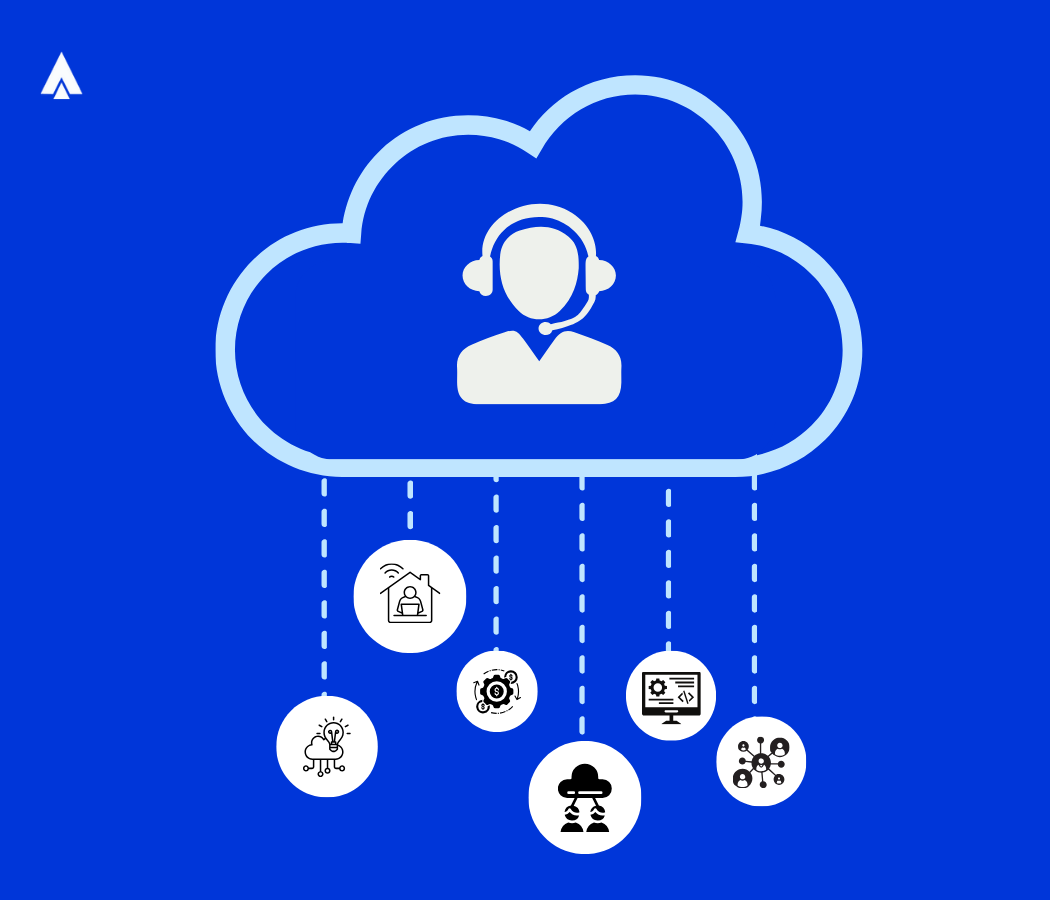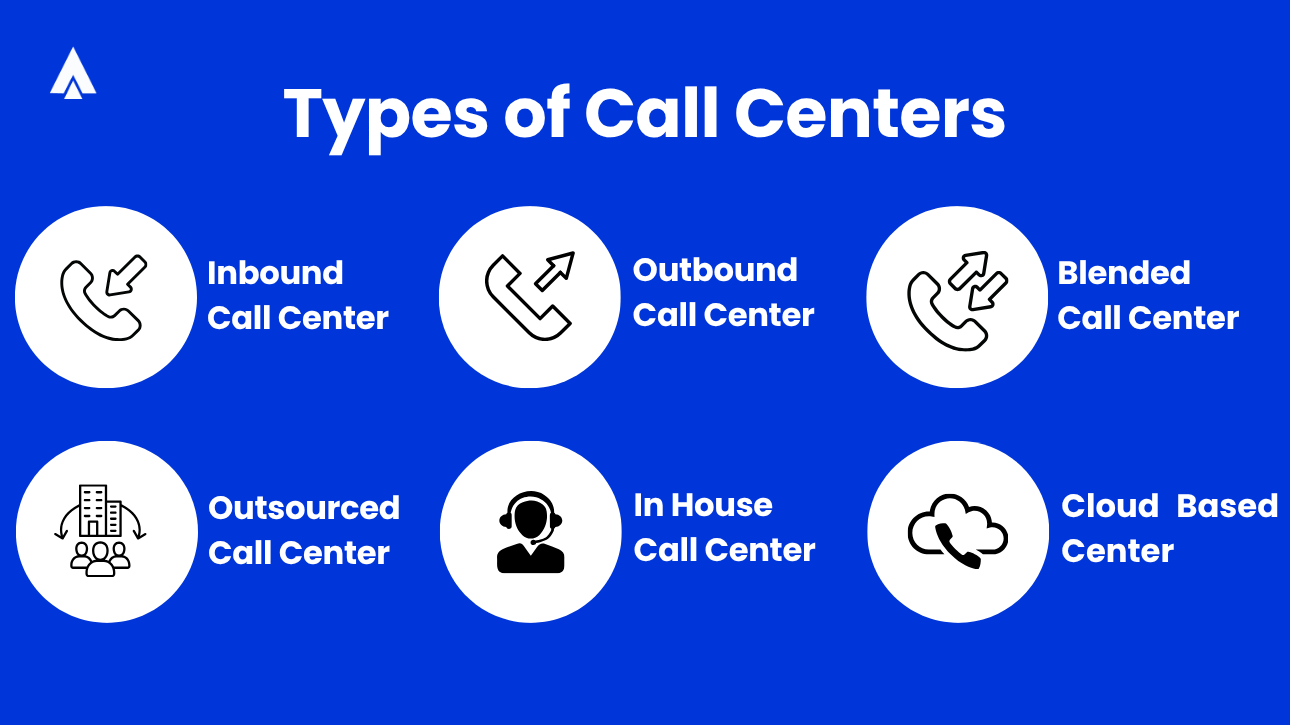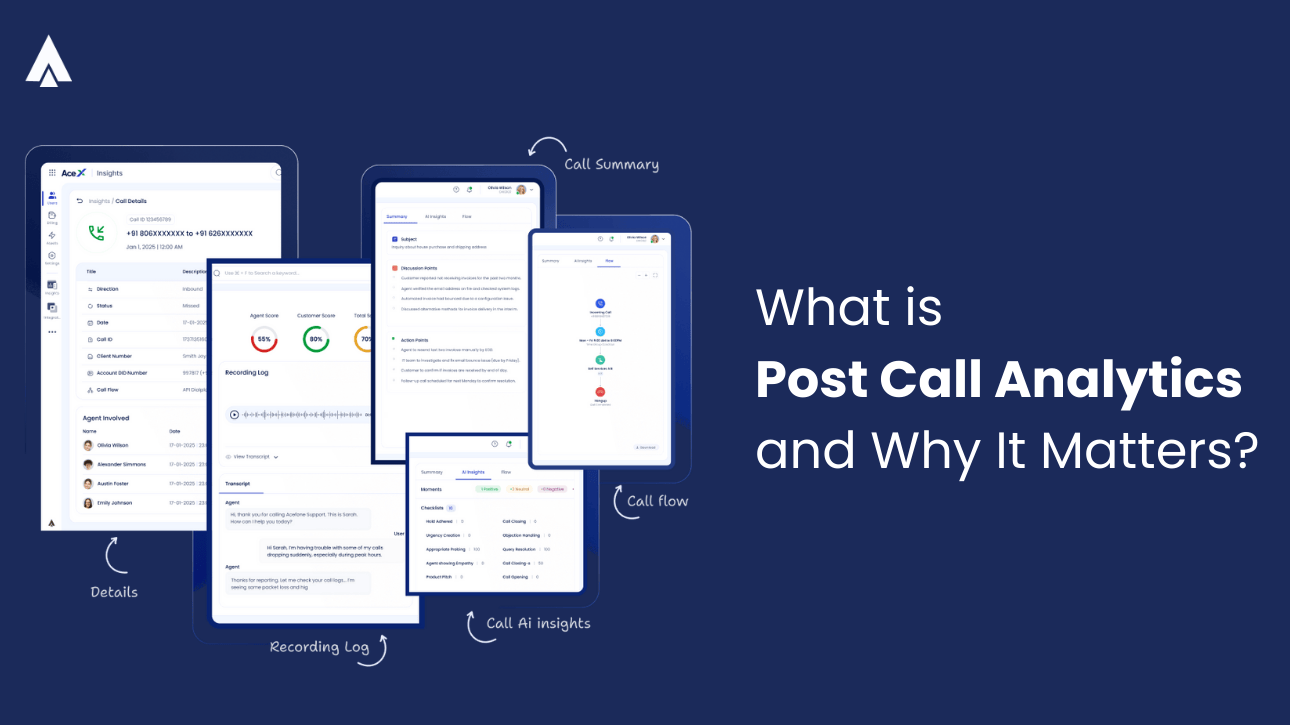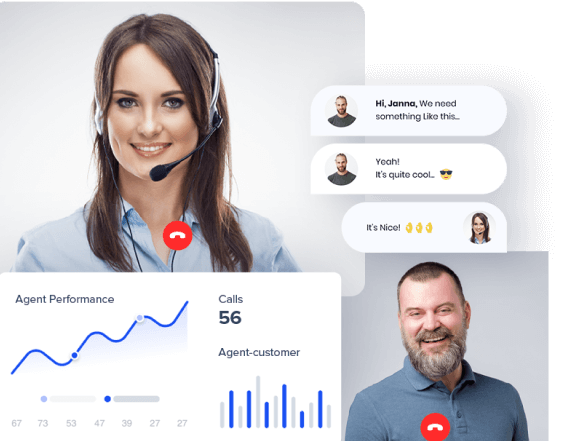Customer loyalty now lives or dies in the seconds between a ping and a reply. A 2024 Gartner survey shows 77 percent of buyers drop a brand after just two poor service moments. That pressure is why the humble call center has morphed into a $340 billion experience engine racing toward $500 billion by 2027.
Imagine a Bengaluru fintech drowning in 10,000 daily queries while one exhausted agent answers 50. Multiply across thousands of firms worldwide and you see both the pain and the opportunity.
Takeaway: Treat your call center software as a revenue machine, not a cost sink.
What Is a Cloud Call Center?
A cloud call center is a centralized team or facility for handling high volumes of customer communication through voice, email, chat, social media, and apps such as WhatsApp Business calling. Modern centers, however, go further: they generate revenue, extend lifetime value, and surface product insights. a centralized office or a virtual location where a team of customer service specialists handle a high volume of phone calls, either incoming (inbound) or outgoing (outbound)
The Technical View
Behind the scenes, automatic call distribution (ACD), customer‑relationship management (CRM) data, and workforce management (WFM) forecasts converge to route every interaction to the right agent at the right moment. These systems feed rich dashboards that track handle times, sentiment scores, and revenue per call.
The Strategic Reality
Great call centers stand on three pillars: people, process, and technology. Agents become brand storytellers, standardized workflows guarantee consistency, and cloud‑native platforms stitch every touchpoint into one unified customer journey.
“Our center isn’t a complaint box—it’s our main growth channel,” says Priya Sharma, Operations Head at a Delhi real‑estate firm that books ₹23 million in monthly sales through proactive outbound campaigns.
Discover essential call center software features to power a unified customer experience.
Takeaway: A modern call center equals people + process + technology, aligned with revenue goals.

Types of Cloud Call Center: Finding Your Best Fit
Every organization faces a fork in the road: inbound, outbound, blended, or something in between. Choose wrong, and costs balloon. Choose well, and margins soar. Outbound and hybrid cloud call centers often benefit from automated systems—especially the different types of auto dialer, such as predictive, progressive, and preview dialers, which help streamline outbound outreach and improve agent productivity.
By Operation Model
-
Inbound Call Centers
These hubs focus on customer support, technical help, and order processing. They excel in healthcare appointment scheduling, BFSI account inquiries, and EdTech student support. Success hinges on first‑contact resolution (FCR) and cost per interaction.
Want to boost your customer service? Check out our Inbound Call Center Software!
-
Outbound Call Centers
Here, agents drive sales, qualify leads, or handle collections. Real‑estate firms, fintechs, and logistics providers depend on outbound operations to fuel growth. Metrics center on conversion rate and revenue per call.
Explore our Outbound Call Center Solutions– click here to learn more.
-
Blended Call Centers
Blended Call center software teams switch between inbound and outbound queues on the fly. Seventy‑three percent of blended users report higher agent‑utilization rates.
By Ownership Structure
-
In‑House Centers
In‑house teams offer control and deep brand alignment but require heavier capital and hiring muscle—ideal for highly regulated BFSI and healthcare providers.
-
Outsourced Centers
The global outsourcing market hit $97.31 billion in 2024 and is growing 9.8% annually. Outsourcing brings cost savings and speed but demands tight quality oversight.
-
Hybrid Models
Sixty‑four percent of enterprises now blend in‑house strategy with outsourced execution. Hybrid setups pair institutional knowledge with external scalability.
By Technology Stack
-
Cloud‑Based Centers
Eighty‑nine percent of businesses plan a cloud migration by 2026. Benefits include instant scaling, remote talent pools, and predictable costs. “Our cloud move cut infrastructure spend by 40% while boosting disaster‑recovery readiness,” notes Amit Patel, CTO at a Pune health‑tech firm.
Takeaway: Map your growth goals, compliance needs, and budget before locking into a center type.

How Do Cloud Call Centers Work?
At a glance, service looks simple: customer calls, agent answers. Under the hood, however, dozens of systems choreograph every moment.
The Customer Journey
- Initial Contact: Voice still drives 68% of all support interactions, but channels like email, chat, and self‑service portals are closing in.
- Routing & Queueing: ACD algorithms sort customers by priority, language, and context. Interactive voice response (IVR) menus deflect simple queries to self‑service.
- Agent Interaction: Agents apply active listening, draw on real‑time data, and document resolutions thoroughly.
- Resolution & Follow‑Up: Post‑call surveys capture satisfaction; proactive check‑ins deepen loyalty.
Core Technologies
- CRM Integration: Agents see a 360‑degree customer view at a glance.
- WFM Systems: Top tools predict demand with 95% accuracy.
- Call Recording & Analytics: Compliance and quality monitoring keep regulators—and customers—happy.
Takeaway: Seamless journeys require tight integration across CRM, WFM, and analytics layers.
Industry‑Specific Strategies: One Size Doesn’t Fit All
Different sectors face unique pressures, and your cloud call center playbook must reflect them.
- BFSI: Trust and Compliance
Regulators such as the RBI and FCA impose strict data‑handling rules. Elite BFSI call centers resolve 92% of standard inquiries on the first call.
- Healthcare: Privacy and Coordination
HIPAA, GDPR, and patient safety add complexity. A Chennai hospital network cut no‑shows by 35% through AI‑powered engagement.
- EdTech: Learning Support
Multilingual troubleshooting and academic coaching boost retention. One Bangalore EdTech unicorn saw 89% student retention thanks to 24/7 support.
- Fintech: Digital‑First Scale
API assistance, payment troubleshooting, and onboarding dominate fintech queues. A Mumbai start‑up lifted lifetime value 67% via proactive education calls.
Takeaway: Tailor KPIs, scripts, and tech stacks to each sector’s DNA.
The Tech Revolution: AI, Automation, and Cloud
AI now interprets sentiment, coaches agents in real time, and flags compliance risks. Speech analytics revenues are rising 15.6% annually and could hit $6 billion by 2029. In India alone, AI call center spend is set to reach $452.5 million by 2030. To handle large call volumes, businesses often use IVRs, CRM integrations, dashboards—and a dedicated call center management system to oversee performance, queueing, and resource allocation.
- Conversational AI
Natural‑language engines detect intent, predict the next best actions, and translate on the fly. Companies using sentiment cues have jumped FCR from 76% to 89% in six months, according to Gurgaon logistics firm data.
- Cloud‑Native Platforms
Pay‑as‑you‑go licenses, 99.5% uptime, and 200+ app integrations position virtual call center software as the default choice for scaling brands.
- Omnichannel Integration
Eighty‑seven percent of customers now expect identical service quality across every channel. Unified customer profiles and agent training close that expectation gap.
Takeaway: AI and cloud aren’t future tech—they’re table stakes for competitive service.
Building Your Cloud Call Center Strategy: A Decision Framework
Sound strategy starts with a sober audit.
Assessment Phase
- Volume Mapping: Catalog voice, email, chat, and social demand.
- Cost Analysis: Calculate per‑channel costs and agent utilization.
- Tech Review: List system gaps, security risks, and integration needs.
Planning Phase
Create a build/buy/partner matrix:
- Build: When compliance and data sovereignty reign supreme.
- Buy: When speed and cost efficiency dominate.
- Hybrid: When you need in‑house control plus external scale.
Implementation Phase
Roll out in three waves—core, advanced, optimize—while securing executive sponsorship and agent buy‑in.
Takeaway: A phased, KPI‑driven plan derisks transformation.
Measuring Success: KPIs and ROI
Leaders fixate on numbers that matter—cost per interaction, NPS, and customer lifetime value.
Financial Metrics
- Cost Optimization: Target a 15‑25% reduction in year one.
- Revenue Impact: A 5% retention lift can boost profit by up to 95%.
- TCO: Count infrastructure, labor, and hidden churn costs.
Experience Metrics
- NPS: BFSI leaders score 50+, healthcare 40+, EdTech 60+, real estate 30+.
- CES: Lower scores equal smoother journeys; high‑effort experiences push 96% of customers toward churn.
- FCR: Aim for 85% on tier‑one issues, 75% for technical problems.
Operational Metrics
- Agent Utilization: Keep between 75–80% to avoid burnout.
- System Uptime: Hold above 99.5%.
- Scalability: Prove the ability to handle 150% of the average load.
Takeaway: Combine cost, experience, and productivity KPIs for a full ROI picture.
Transform Customer Experience with Acefone
Customer‑experience leaders don’t wait for disruption—they create it. Whether you’re launching your first contact center or modernizing a legacy operation, Acefone can guide every step.
- Assessment: Free strategic consultation that benchmarks your current state and models ROI.
- Strategy: Industry‑specific roadmaps for BFSI, healthcare, EdTech, real estate, and fintech.
- Implementation: Cloud‑native platform, AI analytics, and omnichannel integration with 99.5% uptime.
“Acefone became our strategic partner, not a mere vendor. Satisfaction rose 34%, and costs fell 28% within eight months,” says Rajesh Mehta, VP of Operations at a Mumbai insurer.
Takeaway: Don’t let rivals define service benchmarks—set them yourself.














